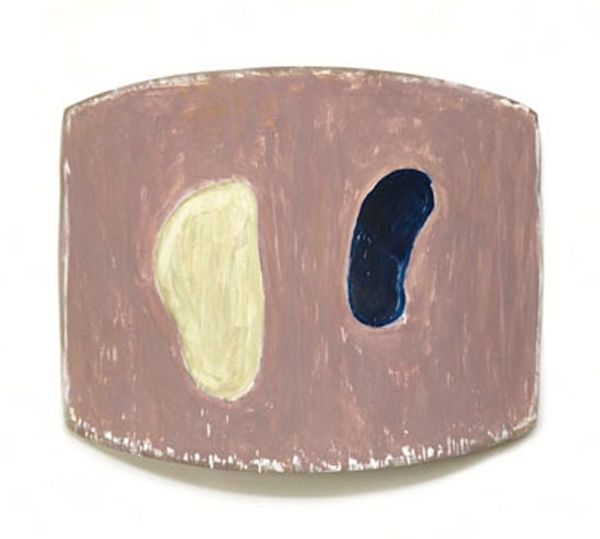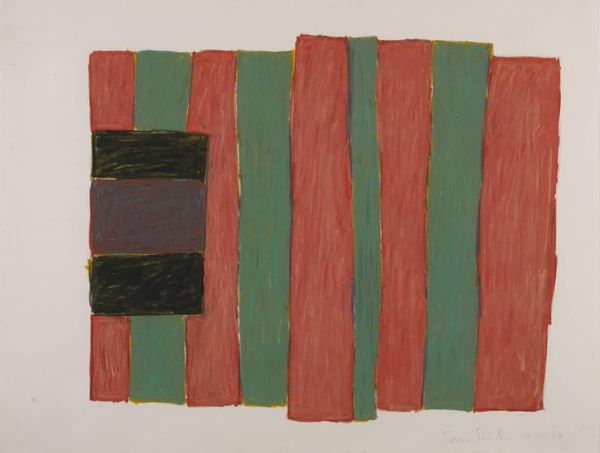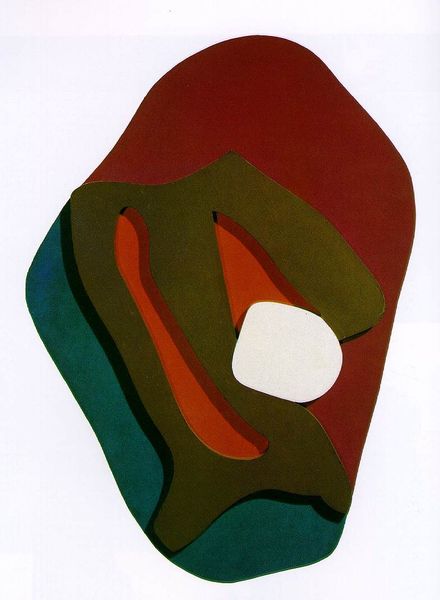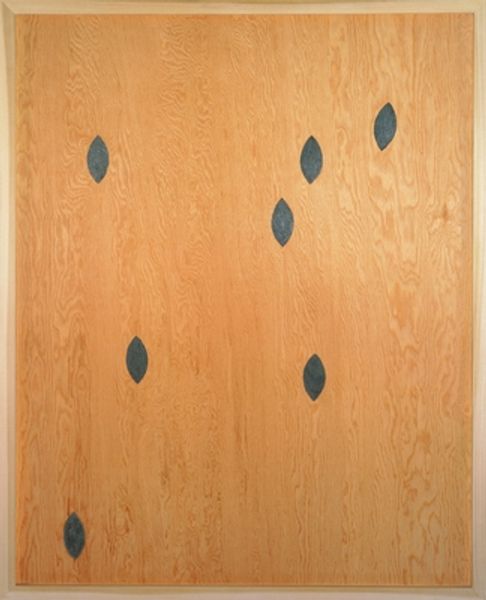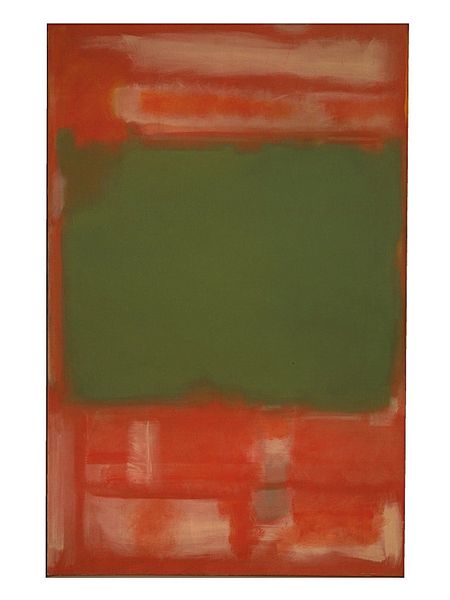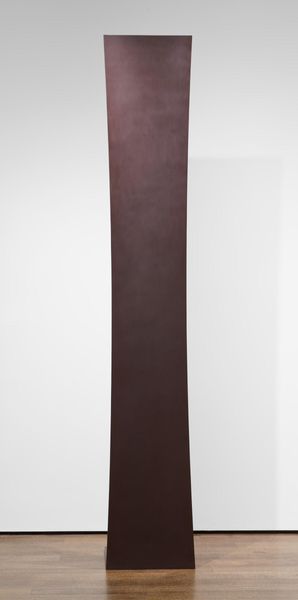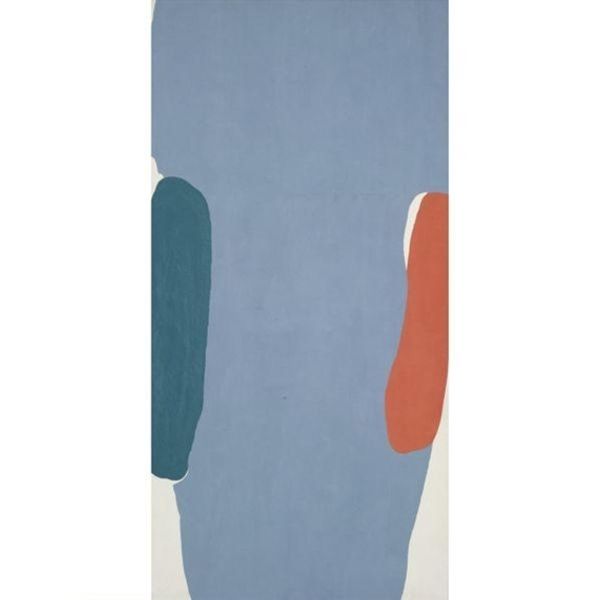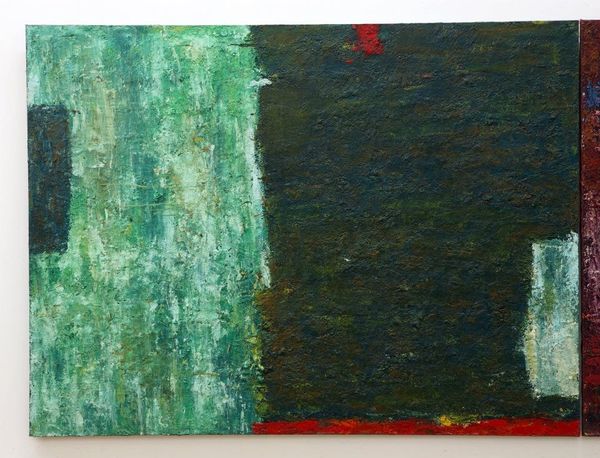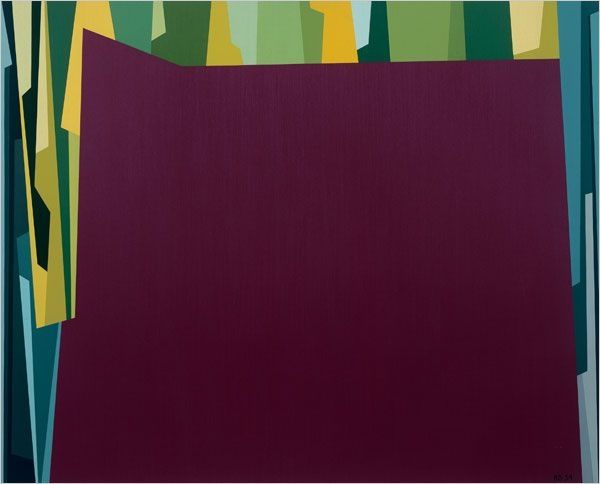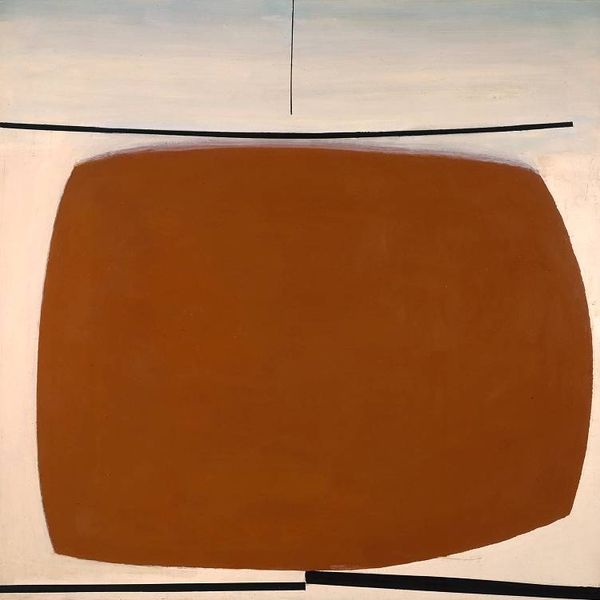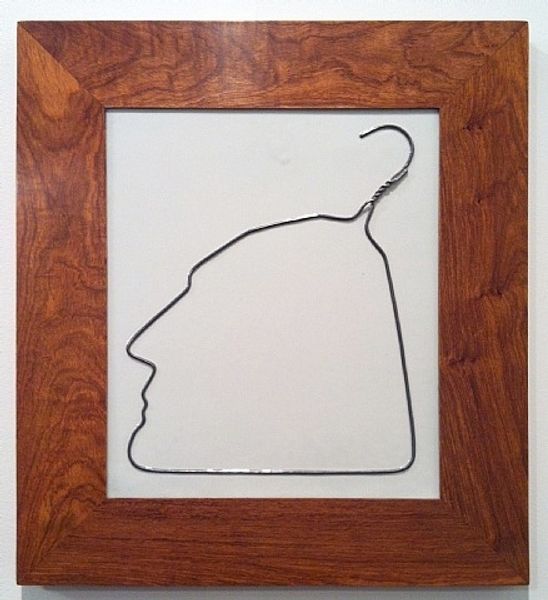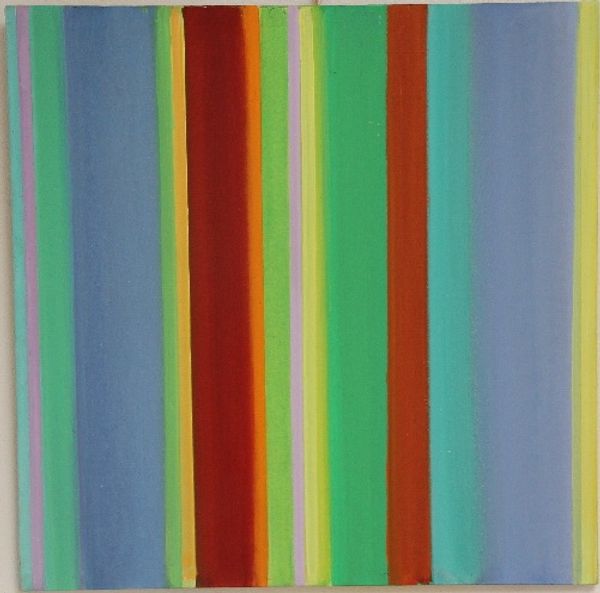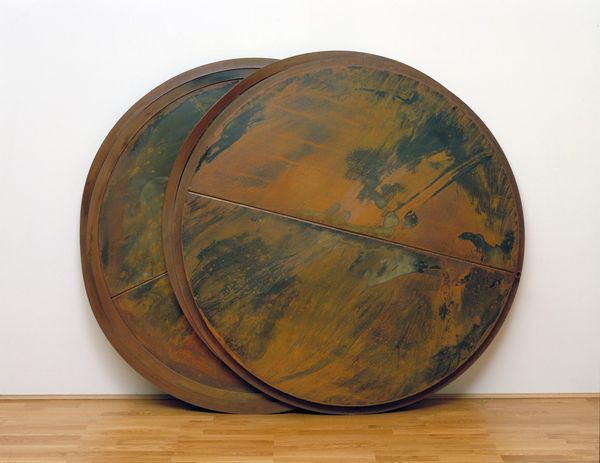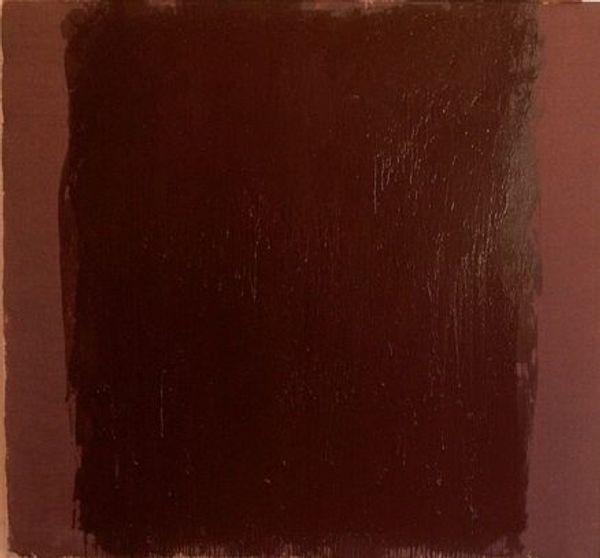
painting, oil-paint
#
painting
#
oil-paint
#
oil painting
#
acrylic on canvas
#
geometric
#
abstraction
Copyright: Ron Gorchov,Fair Use
Editor: Here we have Ron Gorchov’s "Lure II" from 1976, an oil painting, which to me feels both archaic and futuristic at the same time. Its curved form and muted palette contrast sharply with those bright green vertical lines. How do you interpret this work, especially in the context of the 1970s art world? Curator: Considering its historical moment, I see "Lure II" engaging with a broader discourse surrounding the dematerialization of the art object and the institutional critique prevalent in the '70s. Gorchov challenges the traditional rectangular canvas, almost mocking its perceived dominance. How do you think the non-traditional form interacts with its environment? Editor: That’s a great point! The shape definitely makes it feel like it wants to break free of the wall. It doesn't sit quietly; it asserts itself as an object rather than just an image. Is there a specific movement or artist he was responding to, would you say? Curator: I think he was very deliberately reacting against the cool, detached aesthetic of Minimalism which, by the mid-70's, felt like an establishment. I think Gorchov embraced a raw materiality with that visible brushwork and irregular surface, which seems like a challenge to the highly polished surfaces of minimalist sculpture. It forces us to think about the artwork's physical presence. Editor: It's like he’s making the imperfections a feature rather than a bug! Something about it definitely invites closer inspection. This has made me consider the physical and political statements that simple forms can embody. Curator: Exactly. "Lure II" acts as an object lesson in how artistic innovation can disrupt the established order. It’s less about passive viewing, and more about questioning how art exists and functions in society. Editor: This conversation’s given me a completely fresh perspective on the painting!
Comments
No comments
Be the first to comment and join the conversation on the ultimate creative platform.
